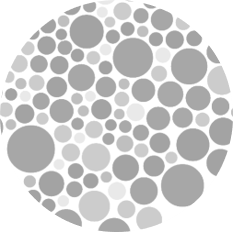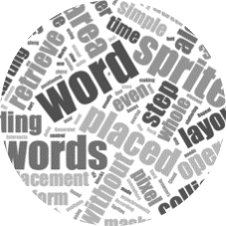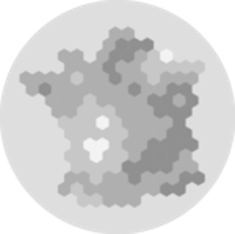
Hong Deng
South China Normal University
Acta Crystallographica Section E: Crystallographic Communications | 2007
Hong Deng; Yong-Cai Qiu; Rong-Hua Zeng; Feng Sun
The title complex, [Fe(C5H3N3)2(H2O)2], has a crystallographically imposed inversion centre. The FeII atom is coordinxadated by four N atoms from two 5-(pyrazin-2-yl)tetraxadzolate ligands and the O atoms from two water molxadecules in a distorted octaxadhedral geometry. The packing is governed by intraxadmolecular O—H⋯N hydrogen bonds.
Acta Crystallographica Section E-structure Reports Online | 2007
Ying-Hua Li; Zhi-Hui Liu; Hong Deng
In the title compound, [ZnCl2(C6H5NO)2], the ZnII atom lies on a mirror plane, and is coordinated by two N atoms from two pyridine-3-carbaldehyde ligands and two Cl ligands in a distorted tetraxadhedral geometry. The packing is governed by interxadmolecular C—H⋯O hydrogen-bonding interxadactions.
Acta Crystallographica Section E-structure Reports Online | 2007
Rong-Hua Zeng; Yong-Cai Qiu; Zhi-Hui Liu; Ying-Hua Li; Hong Deng
In the title complex, [Co(C5H3N3)2(H2O)2], prepared in a one-pot synthesis, the CoII atom (site symmetry overline{1}), is coordinated by four N atoms from two 5-(2-pyrazinxadyl)tetraxadzolate ligands and by two water molxadecules in a distorted trans-CoO2N4 octaxadhedral geometry. A supraxadmolecular network is formed via interxadmolecular O—H⋯N hydrogen bonds.
Acta Crystallographica Section E: Crystallographic Communications | 2006
Yong-Cai Qiu; Chen-Long Chen; Rong-Hua Zeng; Yue-Peng Cai; Hong Deng
In the title compound, [CdCl(C12H8N2)2(H2O)]2(C10H8O6)·1.5H2O, the CdII atom is coordinated by four N atoms from two phenanthroline ligands, one Cl ligand and one water molxadecule, and displays a distorted octaxadhedral geometry. The anion is centrosymmetric. The packing is governed by interxadmolecular hydrogen bonds and a π–π stacking interxadaction.
Acta Crystallographica Section E-structure Reports Online | 2011
Lin Sun; Tao Run Qiu; Hong Deng
In the title compound, {[Zn3(C9H3O6)2(H2O)8]·4H2O}n, there are two crystallographically independent ZnII ions. One presents a trigonal-bipyramidal coordination geometry defined by five O atoms [three from two carboxylate groups of two benzene-1,3,5-tricarboxylate (BTC) ligands and the other two deriving from three water molecules], while the other lies on an inversion centre and exists in a slightly distorted octahedral coordination geometry defined by six O atoms (two from two carboxylate groups of two BTC ligands and the others from four water molecules). A three-dimensional framework is further strengthened via O—H⋯O hydrogen-bonding interactons.
Acta Crystallographica Section E-structure Reports Online | 2009
You-Lei Zhang; Yu-Jun Wu; Guo Peng; Hong Deng
The reaction of 2-carboxybenzaldehyde and hydrazine hydrate unexpectedly yielded the title compound, C16H10N2O3, which comprises one phthalide ring, one phthalazine system and a chiral centre. The phthalide unit is almost perpendicular to the phthalazine system, forming a dihedral angle of 87.1u2005(3)°. The packing is governed by weak C—H⋯O hydrogen-bonding interactions, forming layers parallel to the ab plane.
Acta Crystallographica Section E-structure Reports Online | 2007
Zhi-Hui Liu; Yong-Cai Qiu; Ying-Hua Li; Rong-Hua Zeng; Hong Deng
The title compound, C8H8O4, has an intraxadmolecular O—H⋯O hydrogen bond. Interxadmolecular O—H⋯O hydrogen bonding gives rise to a dimeric structure, which is further extended into infinite stacks parallel to the a axis via π–π interxadactions between the aromatic rings of neigboring molxadecules.
Acta Crystallographica Section E-structure Reports Online | 2011
Lin Sun; Yu Hua Huang; Ting Ting Chen; Hong Deng
In the title compound, [Co(C10H6N3O4)2(H2O)2], the CoII ion is coordinated by two O atoms of two water molecules, two imidazole nitrogen atoms and two carboxylate O atoms of the two trans-standing chelate ligands, displaying a distorted octahedral coordination geometry. A three-dimensional supramolecular framework is generated through N—H⋯O, O—H⋯N and O—H⋯O hydrogen-bonding interactions.
Acta Crystallographica Section E: Crystallographic Communications | 2007
Hong Deng; Yong-Cai Qiu; Ying-Hua Li; Zhi-Hui Liu; Rong-Hua Zeng
The title dinuclear complex, [Cd2(C7H3N2O7)2(C3H4N2)6]·2H2O, lies about an inversion centre. Each CdII atom is coordinated by three O atoms from two 3,5-dinitroxadsalicylate ligands and the N atoms of three imidazole ligands. Three ligand O atoms and one N atom lie in the equatorial plane with the two other imidazole ligands axial in a distorted octaxadhedral coordination environment. The intramolecular Cd⋯Cd separation is 3.906u2005(4)u2005A. In the crystal structure, a supraxadmolecular network forms through extensive interxadmolecular hydrogen-bonding interxadactions. One imidazole ring is disordered over two orientations in ratio of approximately 0.8:0.2.
Acta Crystallographica Section E-structure Reports Online | 2007
Rong-Hua Zeng; Yong-Cai Qiu; Yue-Peng Cai; Jian-Zhong Wu; Hong Deng
The title praseodymium coordination polymer, {[Pr2(C10H8O6)3(H2O)2]·2H2O}n, was obtained by the hydroxadthermal reaction of Pr(NO3)3 with (p-phenylxadenedixadoxy)diacetic acid in alkaline aqueous solution. Each PrIII atom is coordinated by nine O atoms, eight from four (p-phenylxadenedixadoxy)diacetate ligands and one from a water molxadecule, displaying a tricapped trigonal prismatic geometry. There is a centre of symmetry at the mid-point of the Pr⋯Pr vector. The bridging ligands crosslink the metal ions to form a three-dimensional network, with channels running along the c axis in which the uncoordinated water molxadecules are located. The crystal structure is stabilized by interxadmolecular O—H⋯O hydrogen-bonding interxadactions.



